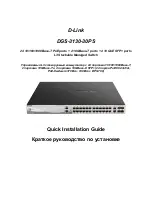
Page 14 / 129
Section
2
.
General
description
2.6.
HDCP management
Lightware Visual Engineering is a legal HDCP adopter, and has developed several
functions that helps to solve HDCP related problems.
2.6.1. Mixing encrypted and unencrypted signals
Complex AV systems often have both HDCP and non-HDCP components. Lightware
hybrid modular routers allow to use HDCP encrypted and unencrypted signals in the same
system.
HDCP and non-HDCP I/O boards can be used in the same matrix frame. The router will be
still HDCP compliant as it will never output an encrypted signal to a non-HDCP compliant
display device. If an encrypted signal should be switched to a non-compliant output, it will
show a red screen alert or will be muted.
2.6.2. HDPC key caching
Lightware introduced the HDCP key cashing technique in early 2009 that validates all the
display keys in an AV system during system boot up and keeps them constantly available
for sources. This method eliminates the HDCP handshake at every switch and keeps all
sources sending uninterrupted signals.
Without this function the sources should re-authenticate HDCP after each crosspoint switch
which makes the displays to drop the signal and go black for 5-8 seconds. The HDCP key
cashing technique avoids this and allows instantaneous switching between two encrypted
signals.
2.6.3. Avoiding unnecessary HDCP encryption
Many video sources send HDCP protected signal if they detect that the sink is HDCP
capable
– even if the content is not copyrighted. This can cause trouble if a HDCP capable
device (e.g. repeater or matrix router) is connected between the source and the display. In
this case the content can’t be viewed on non-HDCP capable displays and interfaces like
event controllers.
Rental and staging technicians often complain about Apple laptops, who always send
HDCP encrypted signals if the receiver device (display, matrix router, etc.) reports HDCP
compliancy. However HDCP encryption is not required all the time (e.g. computer desktop
image) MacBook and MacBookPro still do that.
To avoid unnecessary HDCP encryption, Lightware
introduced the HDCP
enabling/disabling function: the HDCP capability can be disabled on each input port
separately. If HDCP is disabled on an input port, the connected source will detect that the
sink is not HDCP capable, and turn off authentication. The source will not be able to
communicate with any of the devices (displays, repeaters, etc.) that are connected to the
routers output, therefore it could not see if they are HDCP capable or not.
HDCP compliant
repeater
Non HDCP display
encrypted signal
unprotected content















































